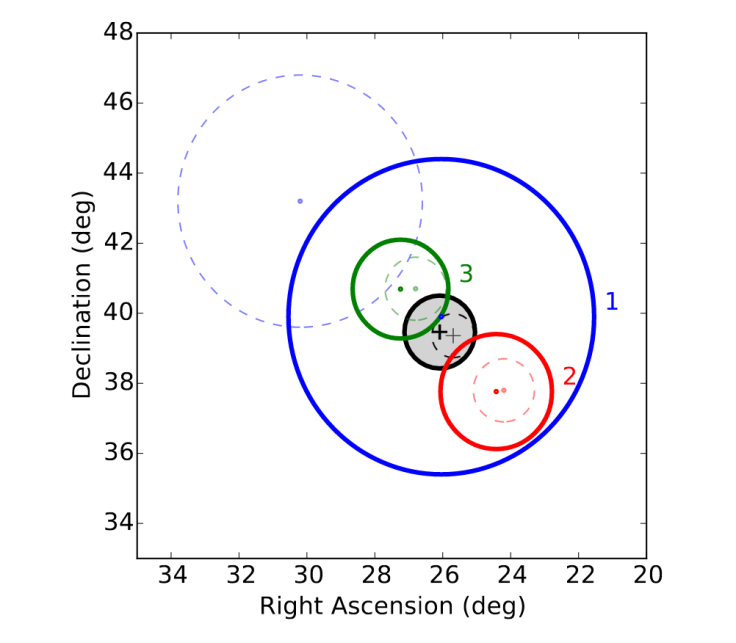Antarctica's IceCube detects trio of neutrinos coming from unknown source
Muon neutrino candidates arrived within 100 seconds of each other, indicating a single source origin.
A trio of high-energy neutrinos have been detected at the IceCube particle detector in the Antarctica. All three arrived within 100 seconds of each other, indicating they came from the same origin – but, as of yet, scientists do now know their source.
The three muon neutrino candidates were detected on 17 February 2016, at the IceCube Neutrino Observatory in the South Pole. The first detector of its kind, IceCube is designed to observe cosmic rays from deep within the ice. It looks for near-massless subatomic particles called neutrinos, which provide information about violent cosmic events, as well as helping answer questions about dark matter.
In a study published on the pre-print server arxiv.org, which has been submitted for publication in the journal Astronomy & Astrophysics, scientists at the observatory discuss the neutrino trio and their potential source.
"On February 17 2016, the IceCube real-time neutrino search identified, for the first time, three muon neutrino candidates arriving within 100 seconds of each other which are consistent with a point source origin," they wrote. "Such a triplet is expected only once every 13.7 years as a random coincidence of background events."
Following their detection, the team used IceCube to make follow up observations in near real-time in a bid to search for the source. They said that while the triplet could have been produced by atmospheric conditions, it could have come from an "extremely energetic source", the IceCube Neutrino Observatory said in a statement. "Three optical observatories searched for emission at the time of the alert and also evaluated data within 30 days before the neutrino triplet."

Two X-ray telescopes observed the position the neutrino triplet came from, while three gamma-ray observatories looked for an electromagnetic emission that would serve as the source counterpart. "All these observations failed to detect any electromagnetic radiation in conjunction with the IceCube neutrino triplet," the statement said.
The observations ruled out a core-collapse supernova, brighter than average gamma ray bursts or active galactic nuclei (a compact region at the centre of a galaxy that is more luminous than the rest of the galaxy light).
The team said the triplet was probably the result of atmospheric backgrounds, and is "probably not astrophysical". However, they said it does show the potential for IceCube to be used for follow-up observations when detections of this kind do take place.
"In case of an astrophysical multiplet detection, the follow-up network employed here and in its future extension should enable the detection of its electromagnetic counterpart and hence identification of a neutrino source," they wrote.

© Copyright IBTimes 2025. All rights reserved.






















